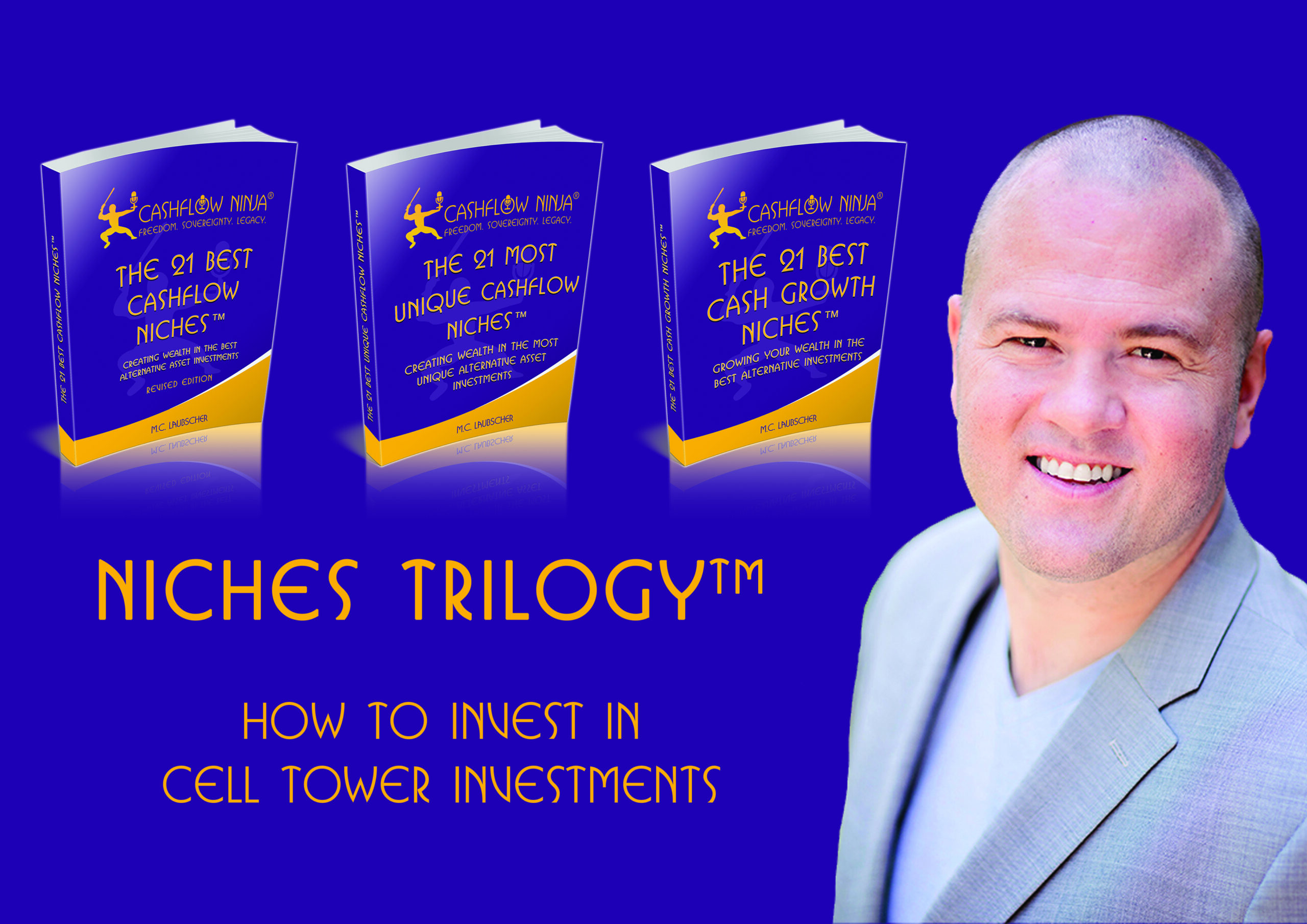
Cell towers have become a popular investment opportunity due to the widespread reliance on mobile devices and wireless communication worldwide.
Cell tower investments involve purchasing or leasing the land where cellular communication towers are situated. Investors generate revenue by leasing space on these towers to telecommunications companies.
Investing in cell towers can be a lucrative venture, offering the potential for long-term financial growth.
Why Invest In Cell Tower Investments?
Investors are attracted to cell tower investments for several reasons. Firstly, they provide a consistent cash flow since telecommunications companies sign long-term leases with automatic renewals, ensuring a steady income stream. These leases also require minimal maintenance, allowing a higher lease income to translate to profit.
The high demand for cell towers is another critical factor. The increasing usage of mobile devices and the transition to 5G technology have significantly boosted the demand for cell towers. Additionally, with limited space for new towers, existing towers become more valuable.
Cell tower investments are an inflation hedge, thanks to built-in rent escalations in many lease agreements. It helps investors keep pace with inflation and protect their returns.
Moreover, cell tower investments offer growth potential. The worldwide rollout of 5G technology calls for more cell towers, which enhances the investment outlook. Additionally, as emerging markets expand their cellular networks, the demand for cell tower spaces is expected to grow.
Lastly, cell tower investments offer portfolio diversification as they are relatively non-correlated with traditional asset classes. This provides investors with an opportunity to balance their portfolios and reduce risk.
Cell Tower Investment Ecosystem
The cell tower industry ecosystem includes various key players. These include cell tower owners, private investors, real estate investment trusts (REITs), and telecommunications companies.
Telecom companies lease space on cell towers for their equipment.
Service and maintenance providers are responsible for the upkeep and servicing the cell towers.
Regulatory authorities ensure compliance with local, state, and federal cell tower construction, maintenance, and leasing regulations.
The industry dynamics revolve around demand drivers and market trends. The increasing usage of mobile devices fuels the demand for cell towers. The global transition to 5G technology also requires additional infrastructure, boosting the demand for cell tower spaces. Efforts to enhance global connectivity also contribute to the need for extensive cellular infrastructure.
Some essential market trends in the industry include consolidation, with larger companies acquiring smaller cell tower owners. There is also a focus on integrating advanced technologies for efficient operation and maintenance. Lastly, the industry is expanding into emerging markets with underdeveloped cellular infrastructure.
How To Generate Income
The cell tower investment space is filled with opportunities for investors to turn a profit.
You can be a direct owner of a cell tower, where you purchase or construct the building and lease the space out to multiple telecommunications carriers. It’s like being a landlord, but telecom companies are paying regular lease payments instead of tenants. This strategy generates a stable and long-term cash flow, making it a reliable investment option.
Alternatively, you could venture into ground lease buyouts. In this scenario, you acquire the land or lease under existing towers, collecting rent from tower owners. Plus, there’s the potential to sell the land for a tidy profit. So, you not only get consistent revenue from leasing the land but also stand to gain from any appreciation in its value.
Then, there’s the option of leasing tower space. With this approach, you lease tower space to entities like telecom companies, government agencies, or anyone needing communication infrastructure. The beauty of this strategy lies in the scalable revenue and potential for long-term contracts, mainly when multiple tenants utilize a single tower.
Diversification through funds dedicated to cell tower investments is another route to consider. By investing in such funds, you get to share in the profits generated by a diverse portfolio of cell tower investments.
And last but not least, there’s the option of international investment. Investing in emerging markets allows you to capitalize on the growing demand for cellular infrastructure. Early entry into these high-growth markets could yield substantial returns as the infrastructure develops.
How Do You Lose Money
Investing in cell towers, just like any other investment, is not devoid of risks.
Imagine this: You’ve invested in a cell tower, and boom! New governmental regulations or policy shifts come into play. They can negatively impact operations, increasing compliance costs or restricting certain profitable activities. The result? Reduced revenue and profitability.
And let’s remember the swift pace of technological advancements. Emerging technologies could render the current cell tower infrastructure obsolete. This could mean significant losses due to decreased demand for traditional cell tower space and the cost of upgrading to new technologies.
Then, there are tenant risks to consider. Major tenants, such as telecom companies, might end their leases prematurely or face bankruptcy. This could lead to substantial revenue loss, impacting the profitability and cashflow of your cell tower investment.
Economic downturns can also throw a wrench in your plans. During such periods, demand from tenants may reduce, leading to decreased revenue and potential financial strain on your investment.
And what if you invest in a cell tower asset at an inflated price? This overvaluation could lead to potential financial loss if the investment doesn’t yield the expected returns and the tower’s value depreciates.
Natural disasters and vandalism are other factors that can’t be ignored. Cell towers, being physical structures, are susceptible to damage from natural disasters, theft, or vandalism. Unforeseen expenses for repairs and maintenance can eat into your profits.
Competition is another element to keep an eye on. An influx of new competitors or an oversaturation of cell tower assets in a specific area can decrease demand and pricing power, ultimately reducing your revenue and profitability.
Location issues can also pose challenges. Invest in a location with decreasing demand for cell coverage or saturation of towers, and you might need to help attract tenants, resulting in lower rental income.
Financing risks are another consideration. If you’ve financed your investment, interest rate fluctuations can impact the cost of capital, leading to increased expenses and reduced profitability.
Lastly, if you’re considering investing in international markets, be prepared for potential instability. Unstable political or economic environments can expose you to currency fluctuations, political turmoil, and other risks that may result in significant financial losses.
Positives and Negatives Of Investing In Cell Tower Investments
Positives:
Steady Cash Flow: Cell tower investments offer stable and consistent cash flow through long-term leases with telecommunication companies.
High Demand: The increasing usage of mobile devices and wireless technology creates a growing demand for cell towers.
Low Maintenance: Cell towers require minimal upkeep, resulting in low operational costs.
Inflation Hedge: Lease agreements often include rent escalations, helping investors keep up with inflation.
Limited Competition: The specialized nature of the industry and high barriers to entry limit competition.
Portfolio Diversification: Adding cell tower investments to your portfolio can help reduce overall risk and increase diversity.
By investing in cell tower assets, you have the potential to earn reliable returns while diversifying your investment portfolio.
Negatives:
Regulatory Risks: These investments are subject to local, state, and federal regulations. Changes in these regulations can affect operations and profitability.
Technological Risks: Advances in technology may make current infrastructure obsolete. This could require additional investment for upgrades.
Tenant Concentration: A small number of major telecom companies usually lease the majority of space. This leads to the risk of relying too heavily on just a few tenants.
Capital Intensive: Investing in cell towers requires a significant initial investment and ongoing capital for upgrading to new technologies.
Market Saturation: The market may already have many cell towers in certain areas. This can limit growth opportunities.
Vulnerability to Economic Downturns: During economic recessions, tenants may seek to renegotiate lease terms or even default on leases. This can hurt revenue.
Investment Opportunity Filter™
The Investment Opportunity Filter™ evaluates an investment opportunity based on cashflow, tax benefits, appreciation, and the leverage it provides.
Cell tower investments score a 4/4 with The Investment Opportunity Filter™.
Cell tower investments can produce significant casflow, have great tax benefits, appreciate through management and operations, and allow for leveraging of others’ skillsets, capabilities, networks, and capital.
Download all the Niches Trilogy Books:
The 21 Best Cashflow Niches
Digital: https://www.
Audio: https://podcasters.spotify.
The 21 Most Unique Cashflow Niches
Digital: https://www.
Audio: https://podcasters.spotify.
The 21 Best Cash Growth Niches
Digital: https://www.
Audio: https://podcasters.spotify.
Listen To Cashflow Ninja Podcasts:
Cashflow Ninja
https://podcasters.spotify.
Cashflow Investing Secrets
https://podcasters.spotify.
Cashflow Ninja Banking
https://podcasters.spotify.
Share This
Related

897: Eugene Shatsman: How To Grow & Scale Your Business Right Now
My guest in this episode is Eugene Shatsman. Eugene is the Managing Partner of National Strategic Group. Eugene teaches business strategy, consumer behavior, marketing, and what all of us want – how to drive more business into our businesses. His team at National Strategic has over 100 people, and they do a tremendous amount of…

896: Chris MacIntosh: Opportunities Around The Globe Right Now
My guest in this episode is Chris Macintosh. Chris has founded and built several multi-million dollar businesses in the investment arena, including overseeing the deployment of over $30m into Venture Capital opportunities and advising family offices internationally. Before this, Chris built a career at Invesco Asset Management, Lehman Brothers, JPMChase, & Robert Flemings. Interview Links:…

895: Josh McCallen: Why Airbnb Gurus Are Shifting To Boutique Hotels
My guest in this episode is Josh McCallen. Josh is a nationally recognized hospitality executive, conference speaker, innovator, builder & investor with a track record for developing exceptional resort properties and growing world-class operational teams. Josh is also one of the principals of Accountable Equity, an investment firm that specializes in historic resort communities and…
